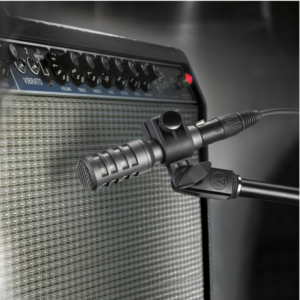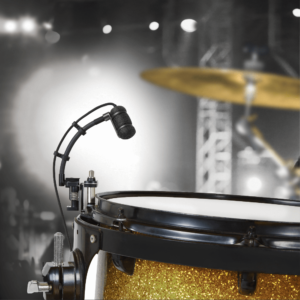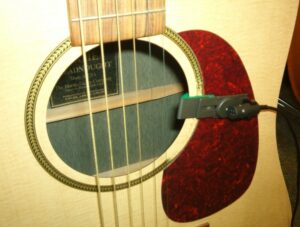
Question: Do you have any tips on placing microphones to get the best possible sound?
Answer: The quality and specifications of a microphone are of utmost importance in both live and studio applications. We can all agree on that. It is next to impossible to achieve good audio with a cheap microphone or using a microphone that was not designed for the task at hand. For example, you probably will not achieve the desired sound when recording a distant source with a dynamic cardioid microphone. A more suitable choice would be a condenser shotgun microphone with its greater sensitivity and tight acceptance angle. You also would not use an omnidirectional handheld microphone on a live stage with lots of floor wedge stage monitors. If so, the Larsen effect (better known as feedback) will rear its ugly head! Just as important as using the right microphone is placing the microphone in the correct position to achieve the desired sound. So, just how much does microphone placement affect sound picked up by the microphone? In a word, lots!

Just recently our Audio Solutions manager was asked to consult with a public library that was producing online videos and was concerned about the audio. As he watched and listened to their videos it was obvious that even though they were using a quality microphone it was placed too far away from the orator, keeping the spoken word from being clean and crisp. What are some of the things affected by microphone location? As in the above example, a microphone placed too far away from the source may pick up too much of the room. Also, the output of the mic is greatly affected by the distance between the mic and the sound source. The inverse square law states that in a free field the volume of the sound will drop by 6 dB every time the distance is doubled from the source. Of course, the reverse is true as well in that the volume will increase by 6 dB when the distance is halved. This is very useful information to know and use, especially in a live application when fighting feedback.
Knowing the acceptance angle of a microphone and where the null points are is very useful in both live and recording applications by allowing the engineer to only pick up the sounds they intend to. For example, using a hypercardioid microphone with a 100-degree acceptance angle on a stage with several instruments playing can allow the engineer to place the other instruments in the null area of the microphone so they are not picked up.
On- or off-axis frequency response can greatly affect the sound reproduced by the microphone. Anyone who has worked as a second engineer in a studio can attest to this, as the first engineer will have them “move the mic a half-inch to the left on the snare. Not too much. Bring it back a quarter-inch!” We know a guy who booked eight hours in the studio with the expectation that he would get six or eight songs recorded in that time. We had to laugh, telling him he would spend half that time setting mics. About 4 hours into the session he tweeted: “Mics are now set. Ready to start recording!” We never said a word!

Another consideration is what we refer to as “finding the sweet spot.” Every instrument will produce a different sound at various locations on the instrument. For example, placing a microphone at the 12th fret of an acoustic guitar will produce a bright sound, while placing it near the sound hole will produce a more bassy and boomy sound.
So what is the proper placement for miking an “insert instrument.” That depends. We have often told folks there is no wrong way to mike something if that is the sound you are after. In other words, have in mind what you want the microphone to pick up and what you want it to sound like. Then pick a microphone based on its characteristics and then experiment with the placement until you have achieved your goal. Often that goal is to reproduce or amplify the sound captured by the microphone as naturally as possible without touching the EQ settings on the console or recording application.
If you have further questions, feel free to contact the Audio Solutions Department for assistance.
















































































































































.webp)































